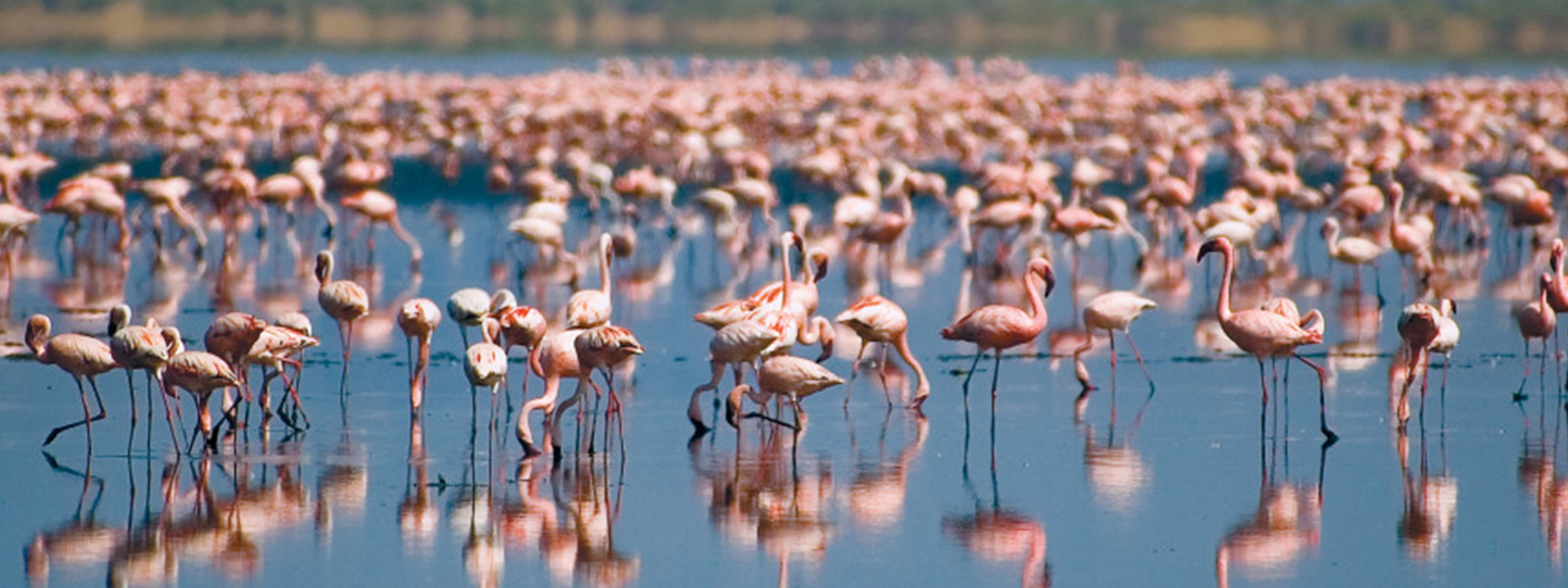Lake Natron

About Lake Natron
Surface elevation: 610 m
Catchment area: 932 km²
Area: 1,040 km²
Lake type: Salt lake
Lake Natron is a salt and soda lake in the Arusha Region of northern Tanzania. The lake is close to the Kenyan border and is in the Gregory Rift, which is the eastern branch of the East African Rift.The lake is within the Lake Natron Basin, a Ramsar Site wetland of international significance.
The Gregory Rift: is the eastern branch of the East African Rift fracture system. The rift is being caused by the separation of the Somali plate from the Nubian plate, driven by a thermal plume. Although the term is sometimes used in the narrow sense of the Kenyan Rift, the larger definition of the Gregory Rift is the set of faults and grabens extending southward from the Gulf of Aden through Ethiopia and Kenya into Northern Tanzania, passing over the local uplifts of the Ethiopian and Kenyan domes.Ancient fossils of early hominins, the ancestors of humans, have been found in the southern part of the Gregory Rift.
The lake is fed principally by the Southern Ewaso Ng’iro River, which rises in central Kenya, and by mineral-rich hot springs.It is quite shallow, less than three meters (9.8 ft) deep, and varies in width depending on its water level. The lake is a maximum of 57 kilometers (35 mi) long and 22 kilometers (14 mi) wide. The surrounding area receives irregular seasonal rainfall, mainly between December and May totaling 800 millimeters (31 in) per year. Temperatures at the lake are frequently above 40 °C (104 °F).
High levels of evaporation have left behind Natron (sodium carbonate dehydrate) and trona (sodium esquire carbonate dehydrate). The alkalinity of the lake can reach a pH of greater than 12. The surrounding bedrock is composed of alkaline, sodium-dominated trachyte lavas that were laid down during the Pleistocene period. The lavas have significant amounts of carbonate but very low calcium and magnesium levels. This has allowed the lake to concentrate into a caustic alkaline brine.
The alkaline water in Lake Natron has a pH as high as 10.5 and is so caustic it can burn the skin and eyes of animals that aren’t adapted to it. The water’s alkalinity comes from the sodium carbonate and other minerals that flow into the lake from the surrounding hills. And deposits of sodium carbonate which was once used in Egyptian mummification also acts as a type of preservative for those animals unlucky enough to die in the waters of Lake Natron. Despite media reports, the animals do not simply turn to stone and die after coming into contact with the lake’s water. Lake Natron’s alkaline waters support a thriving ecosystem of salt marshes, freshwater wetlands, flamingos and other wetland birds, tilapia and the algae on which large flocks of flamingos feed.
Soda lake with a population of flamingos. Lie just north of the Ngorongoro Conservation Area. Lake Natron is a good area to visit Maasai communities and experience the Masai culture. Oldoinyo Lengai, only active Volcano, NgareSero waterfall. Walking safaris along the river gorges, as there are waterfalls, plunge pools and a natural jacuzzi fed by water coming from the Ngorongoro conservation area.
Properties:
Lake Natron Tented Camp
Halisi Camp Lake Natron Camp
Ngare Sero Lake Natron Camp
Africa Safari Lake Natron